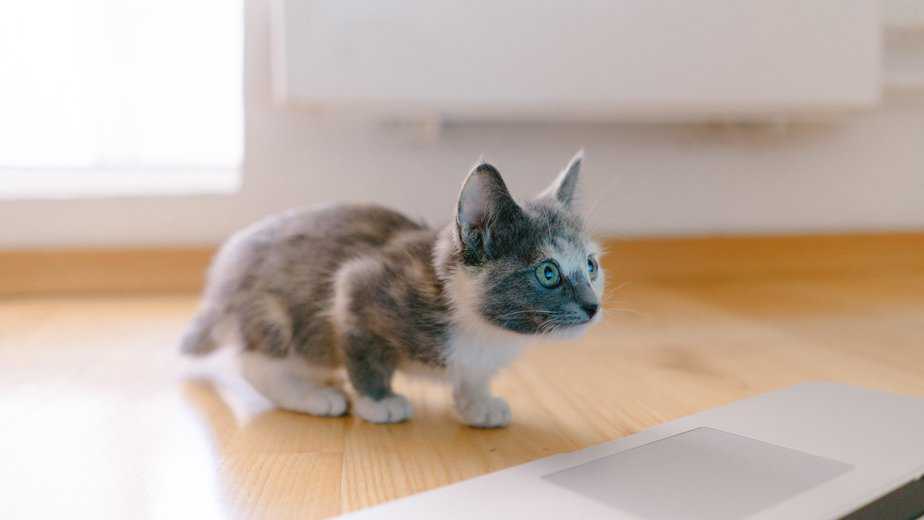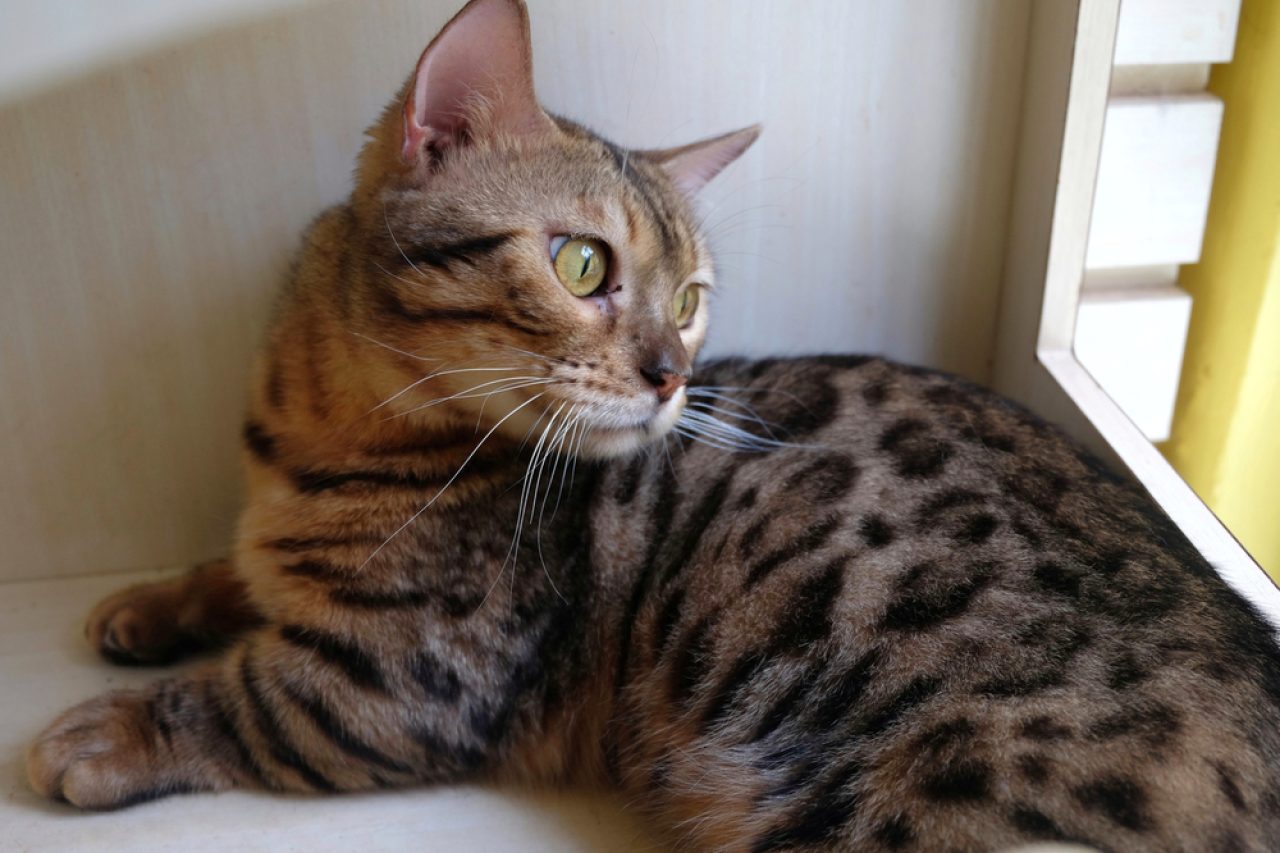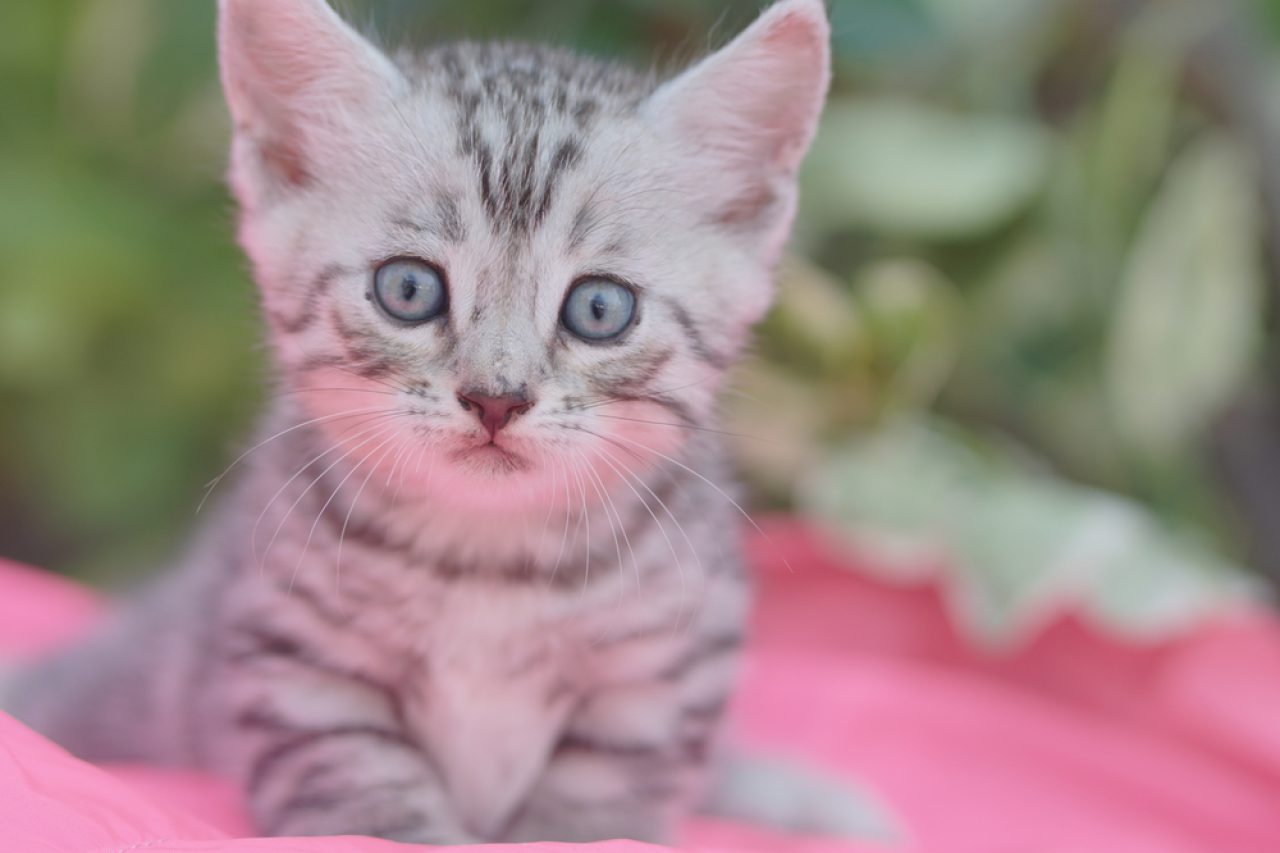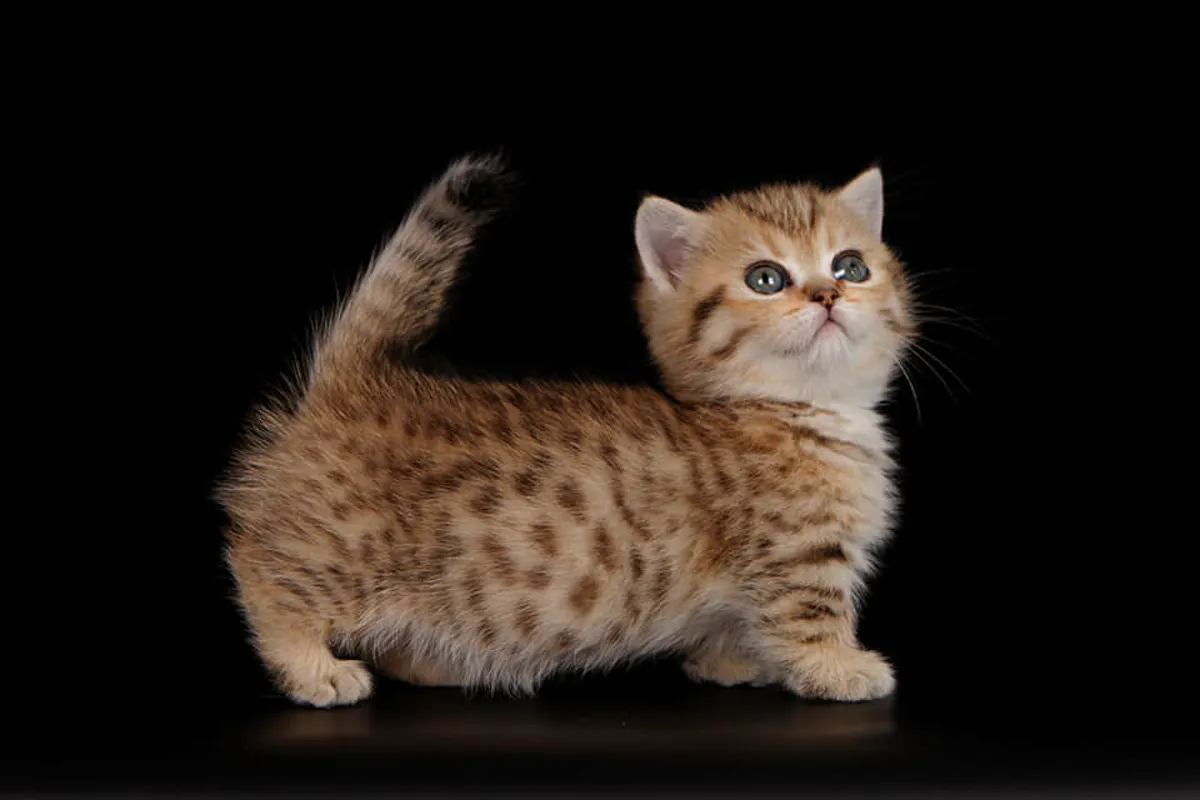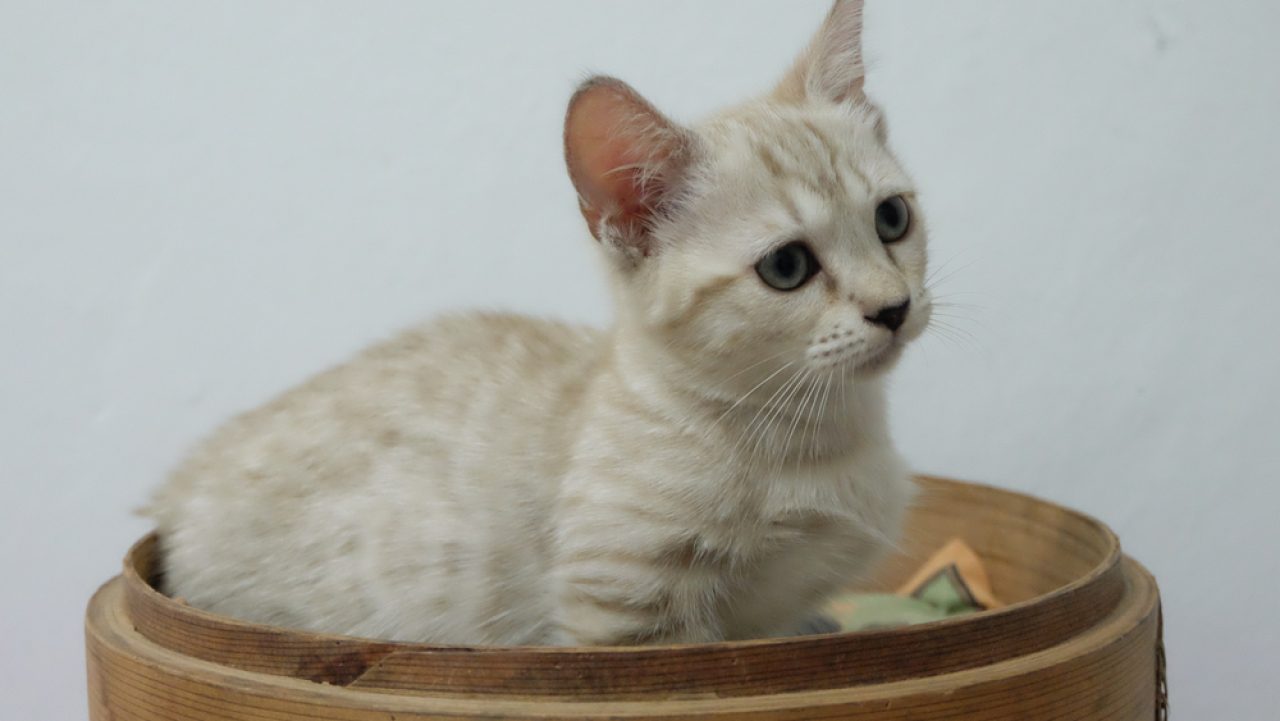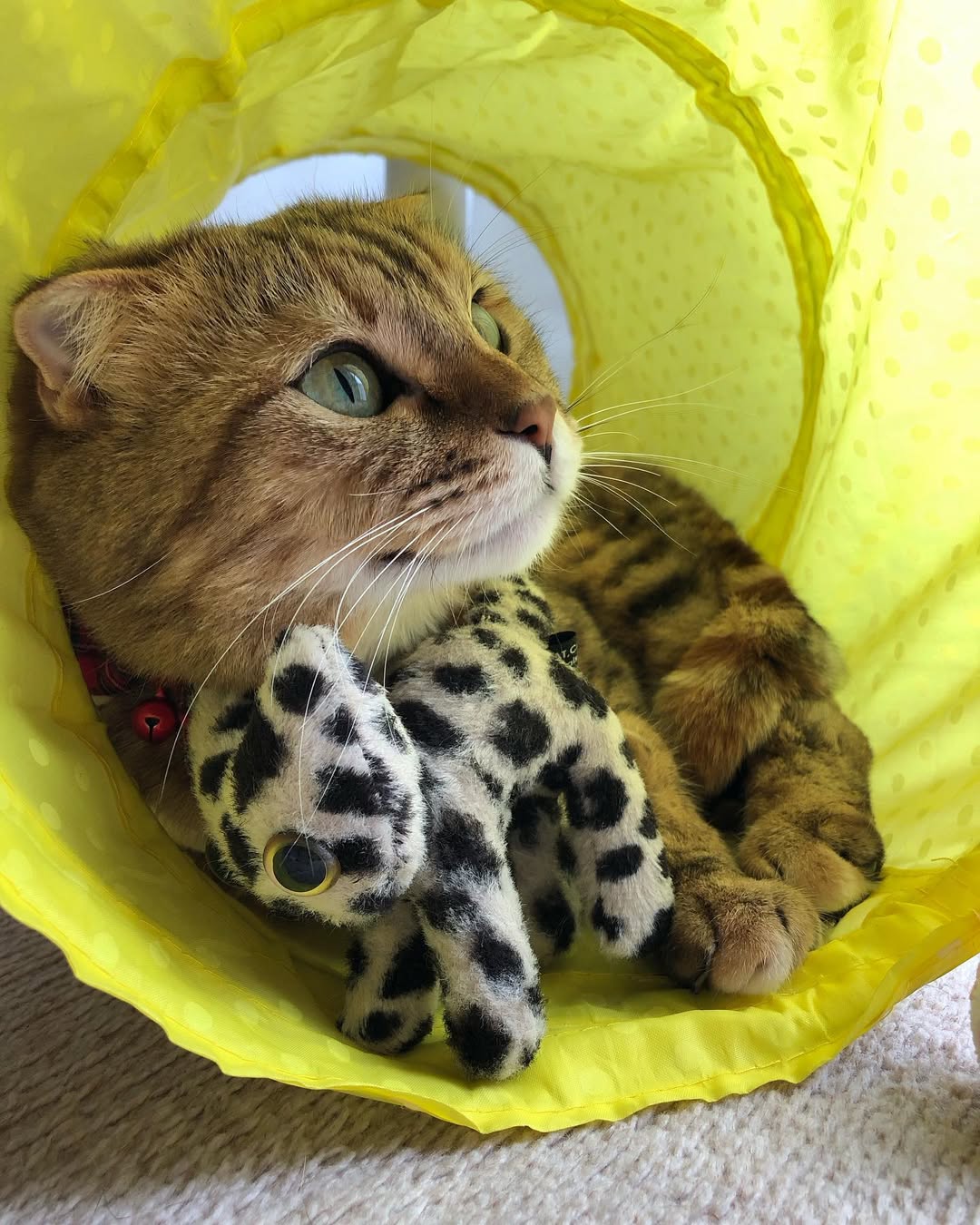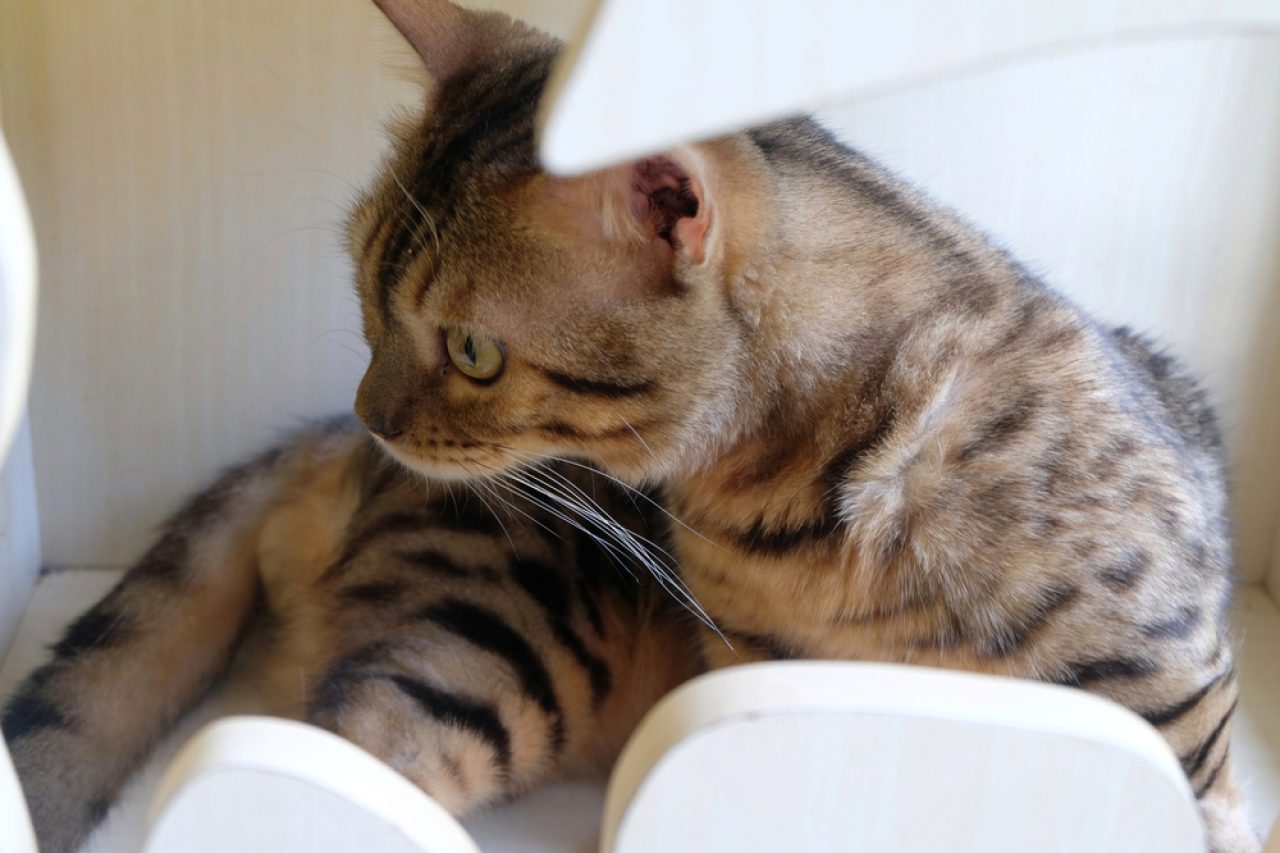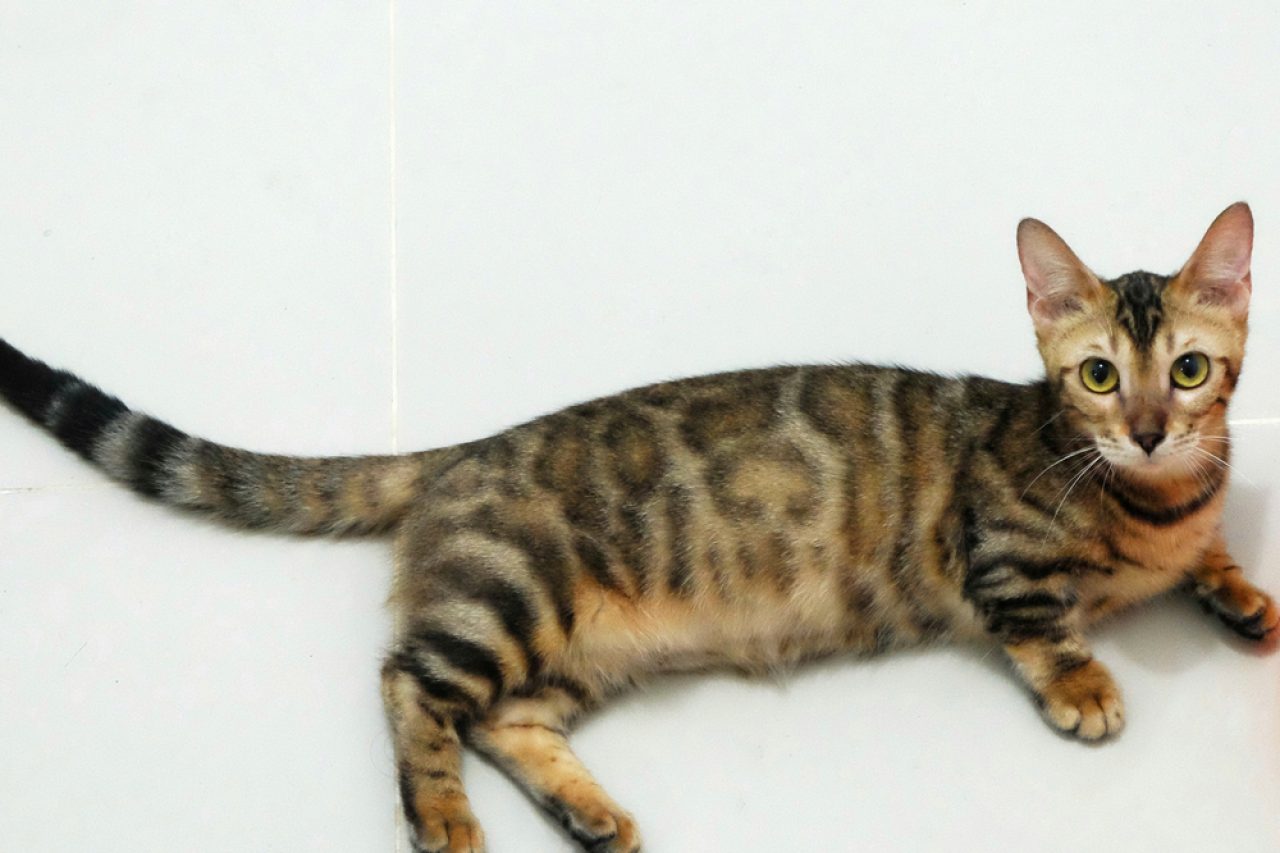📖 Table of Content:
Who remembers the time when munchkin cats were everywhere? Everybody seemed to have wanted a short-legged, perma-kitten they could show off. Even though munchkin cats were a novelty, pet parents became thrilled when presented with, for example, a Genetta cat.
Now, munchkin cats definitely deserved some of the hype they got. On the off-chance that you’ve been living under a rock, munchkin cats are not a breed. They’re pretty much any cat that’s been genetically altered to have short, stubby legs and to appear more kitten-like.
Munchkin cats look exactly like whatever breed they belong to. When you opt for a Maine Coon munchkin, you can expect her to have the trademark long, luscious coat and piercing blue eyes. And if you go for a Bengal munchkin, you can expect a minuscule, rosette-patterned cat that looks as though she’s escaped the jungle to entertain your wildest dreams.
Not to mention that munchkin cats are affectionate, high-spirited, and mischievous, regardless of those Liliputian legs that can’t take them that far. Oh, what they lack in terms of leg length, they make up for with the biggest purrsonalities you can think of. On the other hand, you might not have even heard of munchkin cats because they haven’t been accepted by any of the reputable cat associations for a really, really long time.
As a matter of fact, they’re working on getting the green light from The International Cat Association (TICA) right now. Because they’re a result of genetic tampering and an extensive breeding process, they’re pretty rare. But, what can you expect when you opt for a Genetta cat? What are Genetta cats and what makes them popular? Keep on reading!
What are Genetta cats?
We know what you’re thinking and we’re happy to announce that Genetta cats aren’t wild. While there are numerous concerns when breeding cats that resemble wild animals, these spotted creatures don’t fall under that category. Hence, to answer your “Do Genetta cats have something to do with… genets?” question – they don’t.
Genetta cats are a novice breed developed by breeders at Pawstruk Cattery. To tell the truth, they’re working on “bettering” the characteristics of the breed as we speak. That means that some of the traits we focus on might not even be there when they finish their process.
Whatever the case might be, these frisky felines were created because the Pawstruk breeders thought there was a need for exotic-looking pets. Even more so, they reckoned there was an obsession with African genets.
Genets are slender animals with long bodies and even longer tails that resemble cats. Turns out, pet parents are so obsessed with the thought of owning a wild cat that the breeders at Pawstruk Cattery thought to themselves “We’ve got this!” Actually, Shannon Kiley was the first who thought to combine a Savannah cat, Bengal cat, and munchkin cat to create something that resembles the genet so sought after.
And, we can’t overlook the fact that Kiley has set out to add some wild cat genes to make the breed as gripping as ever. We won’t comment now on the ethics of the process (we will a bit later on, though). But, there’s something to think about when picking a pet that needs to be generally altered to look… cuter.
What makes Genetta cats as popular as they are?
We’re not saying there’s something wrong with Genettas. Quite on the contrary, these bad boys have become popular for a reason. They’re friendly, affectionate, and love hanging out with humans. They’re easily taught to do whatever you want them to. And, they’re known for keeping a kittenish attitude long after they “grow up.”
Having said that, though, there are many, many things about Genetta cats you should consider before taking the plunge and getting one. We’re starting off with a rundown of all the most important aspects of the breed. Oh, and we also prepared some of the “red flags” that might sway you to rather go for a cat breed with longer legs.
History of Genetta cats
Of course, we already touched upon the hows and whys of the history behind Genetta cats. But we haven’t necessarily discussed the fact that the breed was genetically altered to have short, stubby legs and a marbled or spotted coat.
Shannon Kiley thought that Savannah cats, Bengal cats, and munchkins would be an appropriate pick considering they possessed everything she needed to create a perfect, pocket-sized genet.
She managed to come up with a “formula” that would create what she was looking for. And, on December 13, 2006, the first litter of Genetta kittens was born and ready to take the world by storm. As expected, her kittens inherited the characteristics of each breed that went into creating them – and we aren’t only talking about appearance.
But Kiley is working on adding Asian Leopard or Serval lineages, as well as Ocicat and Oriental Shorthairs, as a pivotal part of the breed’s genetics at some point in the future. She’s playing with that “wild side of things,” but at what cost? TICA hasn’t accepted Genetta cats as a breed, and Pawstruk Cattery is working on changing that.
Appearance of Genetta cats
We have to argue that their appearance might be one of the most fascinating things about Genettas. Sure, these fluffy felines look like dwarfish siblings of the African genet, but they don’t always turn out as minuscule as you might think.
Experiments have shown that a single litter can produce both short-legged and long-legged Genetta cats. Kiley says that the breed hasn’t been perfected yet. She claims the short-legged cats will be considered the standard, while long-legged ones will be considered non-standard.
Another thing worth noting: At first, Kiley planned for Genettas to look like Bengal cats. Some of the first Genetta kittens possessed marbled and spotted coats, long lean bodies, and the short, stubby legs of a munchkin cat. But, she’s hoping to change both the appearance and the temperament of the Genetta cat by adding those aforementioned wild genes.
As for coat color combinations and patterns, there can be some deviations from the Bengal cat. Genettas come sporting silver, brown, and black spotted coats; or brown, chocolate, silver, cinnamon, black, or snow, marbled coats. Calico, tabby, and torbie patterns aren’t desirable among the breeders.
Purrsonality of Genetta Cats
Cats with short legs come with huge purrsonalities! God, doesn’t that sound like the Genetta cat we know and love!? Genetta cats get along with big humans, little humans, and animals that look like they can eat them alive.
When you’re trying to figure out what to expect when you’re expecting a Genetta cat, take a look at Savannahs, Bengals, and munchkins. For starters, Savannah cats are affectionate with people they know (a.k.a. you). But, they don’t trust anybody who hasn’t been feeding them for at least three days straight.
On the other hand, Bengal cats are the rascals of the feline world. They’re as tenderhearted as other breeds, but they adore keeping you on your toes – running around, knocking things down, and making you question your life decisions.
Then we have munchkin cats, who can’t live without toys. They’re curious about their environment and they love exploring the space they have. But, more than anything, they’re obsessed with toys that keep them stimulated and motivated to run around like headless chickens.
Genetta cats, as you might have guessed, are a combination of all.
High-maintenance or?
Genettas, like other dwarfish breeds, couldn’t be anything other than high-maintenance! When you combine different breeds, play with genes that affect the external appearance of the breed, and go for the “wild appeal,” you can’t expect anything other than a cat that needs your undivided attention.
Now, Genetta cats require the same things as other cats (grooming, bathing, brushing, and nail trimming). However, they need a couple of other things to keep them happy and healthy.
Right off the bat, they need shorter scratching posts and climbing trees to release some of their energy. They also need space because they love running around, chasing after insects, and knocking things down in an attempt to get your attention.
And they need specialized eating and drinking bowls to make sure they can access them without problems.
Things to consider before getting a Genetta cat
When you look at a picture of a Genetta, you can’t help but think “That’s the one I want!” But there are concerns about the ethics of breeding munchkin cats, the health problems that might ensue with the Genetta cat breed, and (while not as serious) the question of whether munchkins like Genetta cats are hypoallergenic. We, of course, are bringing you the scoop on these curious creatures.
Have you ever wondered how munchkin cats get those little legs? Here’s the thing, they need something known as a “lethal” gene. The name stems from the fact that the kittens die when both parents possess the gene and pass the gene onto the kittens.
To keep that from happening, breeders breed munchkin cats with regular cats that don’t possess the gene and hope for the best. More times than not, the kittens can survive when breeders ensure the process goes that way. Other times, both kittens and their parents die. And, we can’t help but question the ethics of Genettas considering the fact that breeders breed genetic mutations into these cats intentionally, for the sake of profit.
Other than lordosis (a type of spinal distortion), mobility problems, and concave chest, Genetta cats can have a happy and healthy life for as long as 12 to 15 years. As long as you take care of them, and provide them with proper nutrition, physical activity, and affection, they’re as good as long-legged cats.
